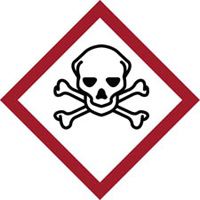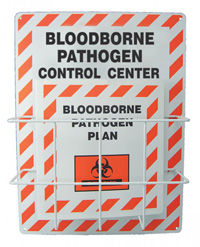| The Home page of ILPI's Safety Data Sheet (SDS) Resource, the leader in SDS information since 1995! | |
| The history and philosophy behind this resource. | |
| A curated collection of books and reference materials concerning Safety Data Sheets and closely related topics. | |
| Paste your plain text SDS into the SDS-Demystifier, and it will be converted into a hypertext-enriched document with links to detailed explanations of each key term. | |
| An extensive list of frequently asked questions about Safety Data Sheets including regulations, content, compliance, and more. | |
| A humorous take on Safety Data Sheet jargon. Fill in the blanks on our entry form to generate a personalized Unsafety Data Sheet to share with your coworkers. | |
| Since 1995, we've maintained this massive curated list of the best places to find Safety Data Sheets on the Internet. | |
| You are here! Way more than a glossary, this hypertext-enhanced resource covers hundreds of SDS-related terms and expert knowledge. Each entry includes both the SDS relevance and links to additional authoritative resources. | |
| Archived results of Safety Data Sheet related polls taken by some of our millions of site visitors | |
| The OSHA regulations behind SDS regulations, including the inspection guidelines and over 400 official interpretations letters under the Hazard Communication Standard | |
| Commercial suppliers of SDS authoring and management software as well as cloud compliance services. | |
| Commercial companies that will create SDS's for your specific needs as well as SDS translation companies. |

Safety signs, banners, and scoreboards? Get yours at Safety Emporium!

Get your GHS-compliant labels and signs from Safety Emporium.
Definition
Acute toxicity describes the adverse effects resulting from a single exposure to a substance. Under Paragraph A.1.1. of Appendix A to to 29 CFR 1910.1200, the OSHA Hazard Communication Standard (HCS 2012), acute toxicity is defined specifically as adverse effects occurring following oral or dermal administration of a single dose of a substance, or multiple doses given within 24 hours, or an inhalation exposure of 4 hours.
Additional Info
Acute Toxicity is one of the ten health hazard classifications under HCS 2012. Manufacturers are required to research the available scientific literature for data establishing acute toxicity per Paragraph A.1.2.1 of Appendix A, but are not required to perform any testing when performing the hazard classification process.
Per Paragraph A.1.2.3 of Appendix A:
The preferred test species for evaluation of acute toxicity by the oral and inhalation routes is the rat, while the rat or rabbit are preferred for evaluation of acute dermal toxicity. Test data already generated for the classification of chemicals under existing systems should be accepted when reclassifying these chemicals under the harmonized system. When experimental data for acute toxicity are available in several animal species, scientific judgment should be used in selecting the most appropriate LD50 value from among scientifically validated tests.
Human tests for acute toxicity are not performed because of ethical and legal prohibitions. The U.S. Environmental Protection Agency (EPA) describes the following methods for determination of acute toxicity:

Laboratory operations are a breeze with Ohaus analytical balances from Safety Emporium.
- Animal testing. Animal tests are still used where other laboratory protocols are not available. These tests are combined with other assays (lethality, necroscopy etc.) to minimize the number of animals sacrificed. Evaluation of acute toxicity data should include the relationship, if any, between the exposure of animals to the test substance and the incidence and severity of all abnormalities, including behavioral and clinical abnormalities, the reversibility of observed abnormalities, gross lesions, body weight changes, effects on mortality, and any other toxic
effects.
- Use of data from structurally related substances or mixtures. In order to minimize the need for animal testing for acute effects, the EPA encourages the review of existing acute toxicity information on chemical substances that are structurally related to the agent under
investigation. In certain cases it may be possible to obtain enough information to make preliminary hazard evaluations that may reduce the
need for further animal testing for acute effects.
- Chemical properties. For example, if a substance is a strong acid then there is really no need to do skin and eye tests as a corrosive material such as this will obviously cause great harm.
- In vitro testing (test tube experiments). Animal rights activists advocate such methods whenever possible. While in vitro tools have now become quite powerful, they will never be able to replace completely the need for animal studies, particularly for pharaceutical studies.
- Limit testing. A single group of animals, typically mice or rats, is given a large dose of the agent. If no lethality is demonstrated, no further testing is pursued and the substance is classified in a hazard category according to the dose used.
SDS Relevance
In OSHA's adoption of the GHS model, does not include the GHS's acute toxicity Category 5. This means that if the manufacturer's survey of the scientific literature (or testing, although none is required) determines that a substance meets the criteria for GHS Category 5, the acute toxicity classification of this material under the HCS would be a hazard not otherwise classified (HNOC) rather than Acute Toxicity Category 5. While the HNOC finding must be reported on the Safety Data Sheet (SDS), an HNOC finding is not one of the pieces of information that must appear on the container label (although the manufacturer is include it if they wish). This scenario is another great example of why one should always read the SDS before working with a new material - labels present only the most important hazards and precautions whereas SDS's are comprehensive.
Toxic effects (if any) will be noted in Section 11 (toxicological information) of the SDS. Any HNOC would be reported in Section 2 (Hazard(s) identifications) of the sheet.
Acute toxicity helps workers understand the health consequences from a single exposure to a chemical. For example, hydrogen cyanide is a highly toxic substance; acute exposure at relatively low doses can result in death.
Acute toxicity differs from chronic toxicity, which describes the adverse health effects from repeated (lower level) exposures to a substance over a longer period (months to years).

Safety Emporium carries bloodborne pathogen compliance centers and related compliance materials.
Further Reading
- Acute Exposure Guideline Levels for Selected Airborne Chemicals: Volume 20 (2016), is available as a free download from the National Academies Press.
- U.S. EPA Series 870 Health Effects Test Guidelines has a bunch of documents related to all kinds of acute and chronic toxicity testing. Check the Final Guidelines and the Revised Final Guidelines regularly.
- Aquatic Acute Toxicity Tests Database at the U.S. Geological Survey.
- Methods for Measuring the Acute Toxicity of Effluents and Receiving Waters to Freshwater and Marine Organisms, part of the Clean Water Act Analytical Test Methods at the US EPA.
- Alternative Methods for the Median Lethal Dose (LD50) Test: The Up-and-Down Procedure for Acute Oral Toxicity from ILAR Journal 2002, 43(4), pp 233-243.
- Acute Oral Toxicity at the US National Institutes of Health's PubMed.
- Advances in acute toxicity testing: strengths, weaknesses and regulatory acceptance from Interdiscip Toxicol 2018, 11(1) pp 5-12.
- Standard Operating Procedure - Acutely Toxic at Yale University.
- Guidelines for Working with Particularly Hazardous Substances at Cornell University.
See also: Chronic toxicity, cyanide, LD